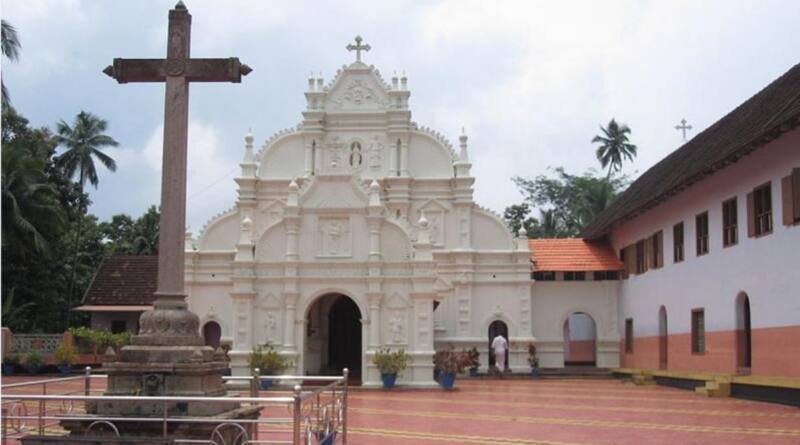Christianity in Our Land
Dear Reader. We have no more than a passing glimpse in to the formative years of an angry young man who, fortified by divinity, proceeded by the end of his short life to shake the foundations of the human community of which he was such a brief part and forge the course of the next two thousand years in a manner never recorded and hitherto never contemplated. With a view to satisfying the curiosity of a questioning world understandably impatient for detail surrounding this phenomenon, those who have held the pen for humankind have shaped a narrative now accepted as gospel truth by academic curriculum and belief that is sparing at best in the details that it affords. But crucial to this narrative is that Jesus lived with his parents Mary and Joseph and siblings Jacob, Joseph, Simon and Jude in the town of Nazareth in Palestine. His father Joseph was a carpenter, and Jesus learnt the trade and supported the family along with this brothers through a profession handed down from generation to generation and from father to son.

By Sujithvv CC BY-SA 3.0
Why is there such an astonishing lacuna in what we know about his adolescence and the significant years spent as a mature man? What was the essence, the trajectory, of a life before embarking on a ministry so momentous and without parallel? We can only presume to extrapolate from the routine of our own daily existence. Did he suffer the recriminations of a fretful mother who raised the question of his betrothal more often than she would otherwise have felt compelled to? Imagine her in a house full of boisterous and unruly boys, snapped at by each the moment she broached the topic of marriage? Or was he conscientious and considerate, always lending a hand and “doing the dishes”, as it were, and generally being a great help to a harassed parent faced with the daily struggle to control the slender budget? Then again, was he remote and volatile, suffused with God’s grace at birth and unable to comprehend what set him so far apart from his peers and society? Was he the proverbial black sheep of the family, a laggard in his work and therefore braving also the template litany of complaints from the paterfamilias, starry-eyed and lost in the solitude that nature and the wilderness provide to exercise his prodigious intelligence and contemplate the greatness of God? Did he immerse himself in the scripture and writings of the unfamiliar Hebrew tongue, so different from the Aramaic dialect spoken by his family and neighbours but nevertheless mastered in the shortest of times? What prepared him for the ministry of a mere three years, another example of a fact engraved in stone by history and belief, that would transform permanently and beyond recognition the scripture and belief and thought and philosophy of human civilisation?

St. Mary’s Thiruvithamcode Arappally of Malankara Orthodox Syrian Church in Tamil Nadu is believed to have been founded by St. Thomas the Apostle.
What was so appealing about this strapping individual whose innate serenity gave no forewarning to the sudden and violent fury that overtook him? One need only recall another story when, appalled at the condition of the Temple on the Mount, the holiest of holy sites besieged by every shade of petty peddler and swindler, he fashioned a “whip of cords” and proceeded to singlehandedly clear with a swinging arm the sacred steps of the profanity that mammon had cast. One can but imagine the beating suffered by the unfortunates at the hand of a man made powerful by God’s breath and possessed of a wrist tempered and toughened by years of physical labour wielding hammer and awl alongside his earthly father.


Was Jesus also possessed of an eclectic bent of mind which, in turn, set his feet on a voyage of enquiry, a journey which led him to walk to India and sample the philosophy of an ancient culture so that he may better understand his own, to better prepare him for what he was ordained? Was he bitten by a wanderlust that remained unrecorded for reasons best known to the cautious editors of the Good News? Tantalising stories circulate. Alas, the evidence of epigraphy and archaeology does not bear out this tale. But how wonderful were it to be true.
You wish for tangible evidence, you say? And what better way to seek confirmation than to place your disbelieving fingertips into the holes wrought in the hands of the Master by the nails that so cruelly pinned him to that favourite of Roman devices, the cross, flanked by murderers to suffer an ignominious and agonising death? Master, I did need to see with my own eyes that you are indeed born again! Yes, Dear Reader, for this was none other than Saint Thomas, he of the doubting mind who wanted for nothing other than to witness for himself the resurrection of his Lord. There may have been a momentary faltering in his dogged and unwavering faith, but surely all is forgiven in the wake of his phenomenal contribution in spreading the Word.

Marth Mariam Syro-Malabar Major Archiepiscopal Church at Arakuzha, Kerala is an ancient Nasrani church established in 999 AD.
Fired by missionary zeal, and possessed of great wanderlust, Thomas eventually landed in AD 52 at Kodungalloor in what is today the modern state of Kerala. For the next twenty years, he preached the teachings of the man from Galilee till an untimely spear thrown by a perpetrator whose details remain unrecorded by history put an end to the life of arguably the most peripatetic of the Chosen Twelve. But his prolific legacy included the establishment of seven churches in Kerala alone, preceded by a string of orders such as the Chaldean Catholic Church and the Assyrian Church of the East which stretched deep in to the Middle East from whence he came, milestones in the sacred pilgrimage undertaken from the Fertile Crescent to faraway and mysterious India.
According to the data provided in 2011 by the Census of India, that gargantuan exercise conducted every ten years by our Republic and, surely, akin to the Twelve Tasks of Hercules, the population of Christians in the country was approximately 27.8 million. When the algorithm is applied with its attendant set of premises and variables, the number for 2022 may well have inched up to a round figure of 32 million. A host of theories have been propounded seeking to explain the inability of Christianity to add exponentially to its numbers, considering its spectacular vintage of two thousand years of unbroken faith, and expand its nationwide presence more tangibly. Whatever may be the reasons, the reality is that the teachings of Christ, given flesh and form by the parish churches that dot our vast landscape, are an enduring fixture and feature of our vibrant and diverse Republic. And the relatively tiny number of adherents, when viewed in the backdrop of the ocean of humanity in which we swim, on closer inspection reveal the enormous diversity in the approach taken to the teachings of the Christ far out of proportion to their physical count. Consider for a moment the denominations in existence in India, from the Roman Catholic Church, that first institution so dear to St. Peter, the monolithic Protestant orders for the most part administratively organised and divided between the Church of North India and the Church of South India, the ancient communities of belief clustered around the Mar Thoma Syro-Malabar Catholic Church and other citadels sacred to the Saint Thomas Christians, and appreciate that these are but a sprinkling of examples representative of that force that may have arrived from across the oceans but, after so many centuries, has synthesized a phenomenon that is surely quintessentially Indian.
Dear Reader, our gaze is cast on our countrymen who have journeyed to every nook and corner of this fascinating world in which we live. We must, then, also stop to examine the impact that our Christianity has made in the countries settled by Indians who profess the faith. It is the unfortunate reality that Christianity continues for the most part to be associated with only those countries of the metaphorical First World, the bloc of countries who nominally adhere to the tenets of Jesus and control the lion’s share of capital and the resources of the world. Cannot our countrymen, then, introduce them to the wonders of Indian Christianity manifest in all its uniqueness? Can they not instruct the people of the host nations in the rich diversity represented by the chorus of liturgies raised to the heavens in praise of God in languages thousands of years old? The opportunities to showcase our treasure trove of culture is boundless.

St. Thomas Cathedral Basilica, Chennai built over the tomb of Saint Thomas the Apostle
By PlaneMad-Own work, CC BY-SA 2.5
San Thome Church is built on the site where St Thomas attained martyrdom. The remains of the Apostle, who was initially buried here, were eventually disinterred and sent for burial to Edessa. The physical presence of the man who introduced the teachings of Christ to India may have been removed forever, but his legacy remains, is sustained and today goes from strength to strength.
Our fellow Indians, overseas and well ensconced in their very different lives, are in a position today as never before to do us the greatest service of propagating our syncretic culture, for it is a culture and heritage without parallel.




